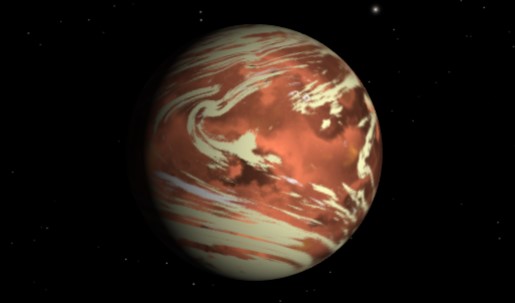September 12, 2023: James Webb Space Telescope has unraveled the mysteries of a distant exoplanet known as K2-18 b. In a historic discovery that has sent great excitement through the scientific community, researchers have leveraged the powerful .
The findings unveil a tantalizing possibility: the presence of carbon-bearing molecules, including methane and carbon dioxide, on this enigmatic celestial body, located a staggering 120 light-years away in the constellation Leo. This revelation raises the intriguing prospect that K2-18 b could indeed be a Hycean exoplanet—a world characterized by a hydrogen-rich atmosphere and vast water-covered surfaces.
K2-18 b, with a mass 8.6 times that of Earth, orbits the cool dwarf star K2-18 within the habitable zone, often referred to as the “Goldilocks zone.” This zone offers the planet just the right amount of starlight to maintain liquid water, a crucial ingredient for the potential development of life. Such conditions make K2-18 b an enticing target for scientists exploring the cosmos in search of life beyond our own planet.
K2-18 b, located 120 light-years from Earth
Hycean planets like K2-18 b are a hypothetical class of exoplanets believed to possess hot, water-covered surfaces and hydrogen-rich atmospheres. They hold particular promise in the quest for extraterrestrial life, as some scientists contend that these environments could harbor the conditions necessary for life as we know it.
The findings, soon to be published in the esteemed journal Astrophysical Journal Letters, mark a significant milestone in our understanding of these “sub-Neptunes,” which fall in size between Earth and Neptune, presenting a unique and poorly understood category of celestial bodies.
According to NASA, Nikku Madhusudhan, the lead author of the paper, emphasized, “Our findings underscore the importance of considering diverse habitable environments in the search for life elsewhere. Traditionally, the search for life on exoplanets has focused primarily on smaller rocky planets, but the larger Hycean worlds are significantly more conducive to atmospheric observations.”
The presence of methane and carbon dioxide, coupled with a scarcity of ammonia, supports the tantalizing hypothesis of a water ocean concealed beneath the planet’s hydrogen-rich veil. Furthermore, the study hints at the potential detection of a molecule known as dimethyl sulphide (DMS), a substance typically associated with life on Earth. Most DMS on our planet is produced by marine phytoplankton in the oceans.
However, the inference regarding DMS remains tentative. Madhusudhan pointed out, “Upcoming Webb observations should be able to confirm if DMS is indeed present in the atmosphere of K2-18 b at significant levels.”
It’s important to note that while K2-18 b lies within the habitable zone and boasts carbon-bearing molecules, this does not definitively imply its capacity to support life. With a radius 2.6 times that of Earth, the exoplanet likely harbors a substantial mantle of high-pressure ice, complicating the prospects for habitability.
In the wake of this groundbreaking discovery, the scientific community eagerly anticipates further revelations from the James Webb Space Telescope and future missions, as they probe the depths of space for signs of life and continue to unravel the enigma of exoplanets like K2-18 b. The quest to answer the age-old question of whether we are alone in the universe takes another thrilling step forward.






